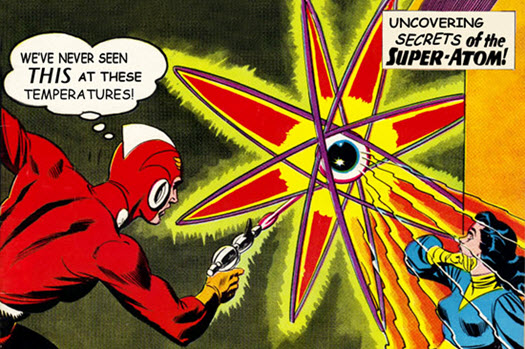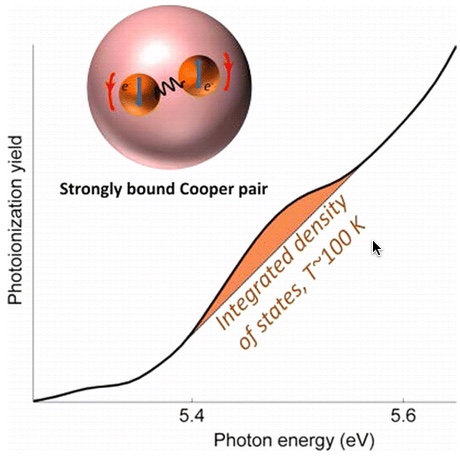A superconductor advance using ‘superatoms’
February 27, 2015

Superconductivity is the ability to transmit electricity without resistance (credit: USC/Original image/DC Comics Mystery in Space #56, December 1959)
USC scientists may have discovered a family of superconductor materials called superatoms that could lead to room-temperature supercomputers.
A team led by Vitaly Kresin, professor of physics at the USC Dornsife College of Letters, Arts and Sciences, found that aluminum “superatoms” — homogenous clusters of atoms — appear to form Cooper pairs of electrons (one of the key elements of superconductivity) at temperatures around 100 Kelvin.
Though 100 Kelvin is about -280 degrees Fahrenheit — not quite room temperature, it’s a significant increase compared to bulk aluminum metal, which turns superconductive only near 1 Kelvin (-457 degrees Fahrenheit).
“This may be the discovery of a new family of superconductors, and raises the possibility that other types of superatoms will be capable of superconductivity at even warmer temperatures,” said Kresin, corresponding author of a paper on the finding published by Nano Letters on Jan. 28.

Superconducting-type electron pair correlations (credit: Avik Halder et al./Nano Letters)
Superconductivity is the ability to transmit electricity without any resistance, meaning that no energy is lost in the transmission. Superconductors operating at extremely low temperatures are already used for MRI machines, powerful electromagnets that levitate maglev trains, particle accelerators, and ultrasensitive magnetic field sensors, but a room-temperature superconductor would allow engineers to make all electronic devices ultra-efficient.
Superconductivity with superatoms
When electrons flow through a material, they bump into various imperfections that knock them off course. That’s the resistance that causes energy loss in the form of heat. If the electrons are mated up into Cooper pairs, however, that connection is just strong enough to keep them on course regardless of what they bump into. Cooper pairs are what make superconductivity work.
Kresin envisions a future in which electronic circuits could be built by placing superatoms in a chain along a substrate material, allowing electricity to flow unhindered along the chain.
The research was supported by the National Science Foundation.
Abstract of A Novel Feature in Aluminum Cluster Photoionization Spectra and Possibility of Electron Pairing at T ≳ 100 K
A unique property of size-resolved metal nanocluster particles is their “superatom”-like electronic shell structure. The shell levels are highly degenerate, and it has been predicted that this can enable exceptionally strong superconducting-type electron pair correlations in certain clusters composed of just tens to hundreds of atoms. Here we report on the observation of a possible spectroscopic signature of such an effect. A bulge-like feature appears in the photoionization yield curve of a free cold aluminum cluster and shows a rapid rise as the temperature approaches ≈100 K. This is an unusual effect, not previously reported for clusters. Its characteristics are consistent with an increase in the effective density of states accompanying a pairing transition, which suggests a high-temperature superconducting state with Tc ≳ 100 K. Our results highlight the promise of metal nanoclusters as high-Tc building blocks for materials and networks.